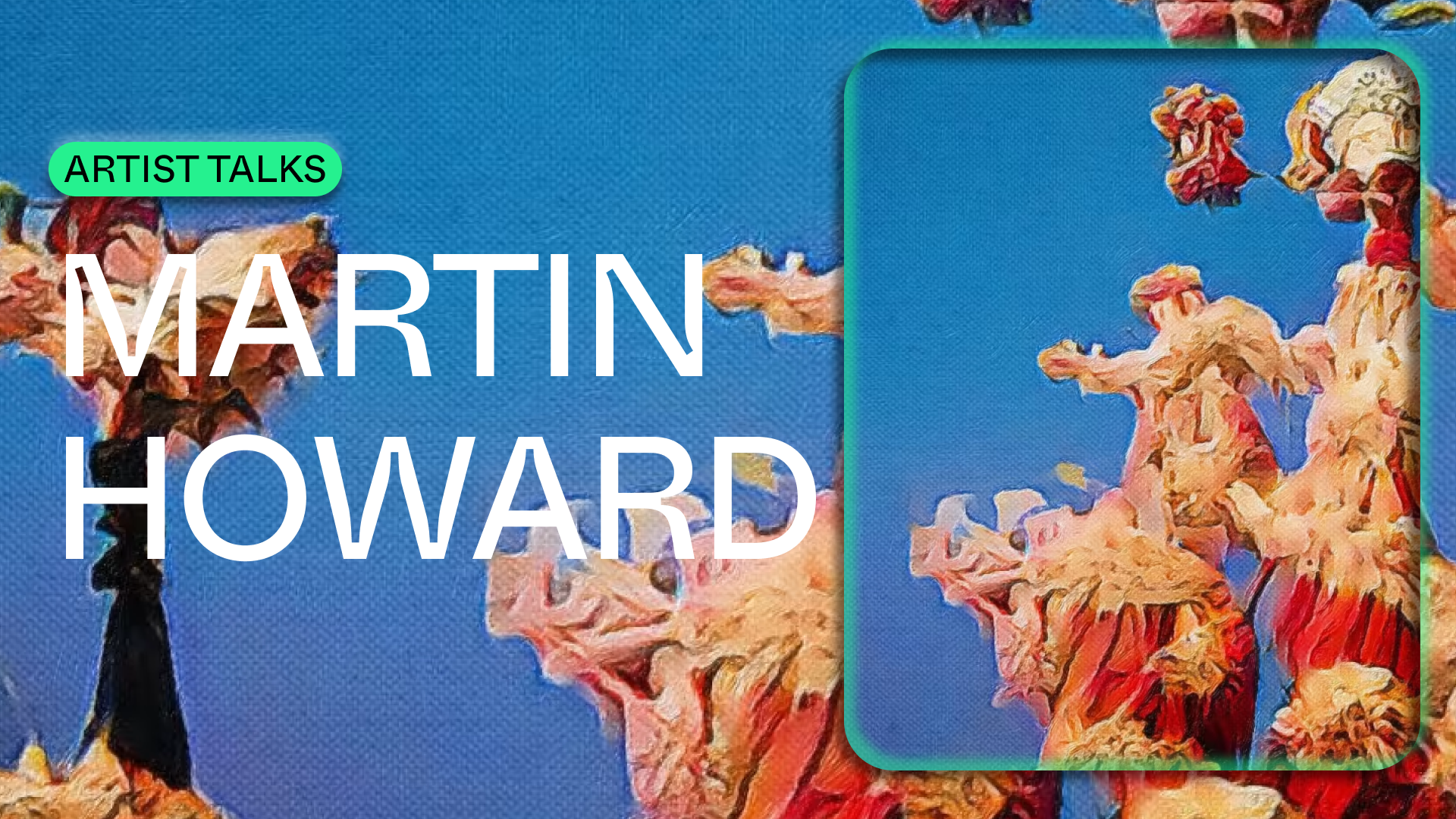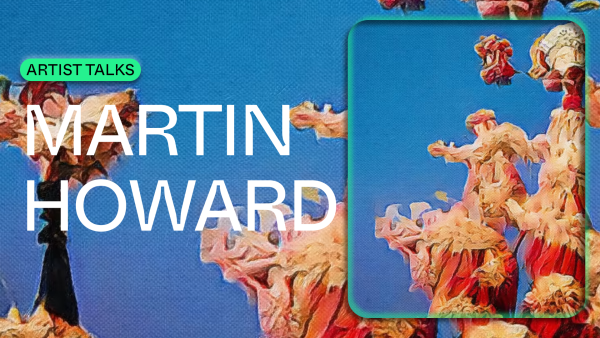Artist Talks: Martin Howard On AI And Alien Inspiration.


The Palm Creator Engagement Program recognizes artists as the foundation of the new creator economy. Rooted in community, the program has, at its core, the goal of elevating and amplifying the brilliant works of artists across the Palm network.
In February’s Palm Creator Engagement Program instalment, Palm NFT Studio spotlights Martin Howard, a graphic designer creating artificial intelligence NFTs. The art of Martin Howard derives primarily from the art of machine learning, a method of data analysis that autonomously builds an analytical model building. “I’ve been a visual artist for a lot of my life,” says Martin Howard. “I’ve been a digital artist since the mid-nineties when the tools became more readily available. I live a fairly creative life, but the work that I do in visual art is the most interesting and exciting.
Could you tell us about your latest Visitors From Sector Five series?
I started using those artificial intelligence art tools a few months ago and as I was using them, I think it was actually a freak accident. I stumbled on a set of variables that really guided me to something that I found very aesthetically appealing and something that looks a little bit less AI Art than some of the AI artwork that I usually see. I saw these beautiful forms in the fabrics and the costumes that were coming up. This was all generated by the AI art and I found it quite stunning. I could get a really interesting background which reminded me of some of the skies, while the surrounding backgrounds reminded me of something you might see in Renaissance paintings.
“I’m exploring the release of that creative power to something that is outside my control.” – Martin Howard
Do you feel more in control (or more power) when you’re working alongside artificial intelligence?
I think that’s the question that opens up the paradox because I feel very powerful in the sense that I can produce these things at a vastly faster rate than I could if I was doing things from scratch. One of the things I’m exploring through the digital art process is the release of that creative power to something that is outside my control. That’s a weird thing, but it’s because a lot of the illustration that I do in my graphic design practice is very meticulous and structured, while the process is very defined. So in a sense, I think my visual art is looking at something opposite to that, taking away any kind of well… taking away as much of the initial creative process and offloading that onto something else, and then seeing what happens.
How does being a digital artist before the social media era differ from making art in today’s time?
I think there’s a difference in the software and the capability of the software because at that point we just didn’t have any. You were sort of releasing a lot of your control to the process. So yeah, that was a difficult area of work. The sharing process also affected that creative process. All you could do really is make your own website, a little art gallery, and share it by URL with your friends. It was a pretty small world at that stage, I think. The power of the tools you’re working with is very different.” If I look back at some of my early stuff, you’d see that there was a very primitive process, like the layering of brush strokes. The way colors and textures worked was very different. I think it was a case of grabbing the medium and seeing what we could do with it, especially with Photoshop. When I got the first copy of Photoshop that came off the shelf, you couldn’t really do much with it. You could blur things, but you couldn’t really deep patch anything. There was no alpha channel. You could add some very primitive kind of pixel effects, but you could only work with images that were about…0.5 megabytes before you send your computer into meltdown.
When did you first start as an artist or designer?
It branched off my work as a graphic designer, which was working in vector and in Photoshop. But then there were tools like Painter that came along fairly soon. I think what sparked my interest then was the convenience of it; being able to create without any mess and you could just jump on and do something cool without having to prepare or clean up, which is usually a fairly annoying process for me. You had the option to undo, which means you could explore ideas very rapidly and you could do crazy things and then just undo it. It speeds up the process of experimentation.
Do you mind sharing the type of software tools that you use in regards to your work?
The main one that I use is Artbreeder to generate the primary visuals. And you know that you’ve got to explore their tools because there’s a vast number of different directions that they work in. Then I bring it into Prism. I use it on the iPad and the iPhone.
How do you envision yourself in the future of the NFT ecosystem?
I’d like to see better curation and categorization of NFTs. I see myself producing in much the same way, maybe exploring different themes in the work that I produce. But at this stage, I find the current NFT area so diverse. There hasn’t been a lot of work, especially by the big NFT sites to categorize according to aesthetics or styles. It’s pretty much dominated by whatever’s selling fastest at that time. But I think those sites or other sites could make a place for people who want certain styles because now it’s attracted the interests of genuine art collectors and curators. In time, I think that’ll settle out and you’ll see a bit more sophistication in the curation process.
Discover more from Martin Howard on:







